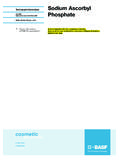Transcription of Precision Cleaning Systems Lab DI Water Systems - tmasc.com
1 Associates Precision Cleaning Systems 3678 Bassett St. , Santa Clara CA 95054 Phn: [ 408 ] 727 8388 Fax: [ 408 ] 727 8991 E-Mail DI Water DI or de-ionized Water is simply Water that has had most of the mineral content and dissolved ion content removed.
2 It is pure Water . The cleanliness of the Water is rated as its resistance value. [Pure Water will not conduct electricity][The rating is in Meg Ohms.] Microsiemmens or Conductivity is also used as a measurement of DI Water Standard tap Water is brought to a temperature of about 72 degrees f and run though a pre filter system consisting of a 25 micron sediment filter, 25 micron carbon filter and either a Water softener filter or a chloramines filter [depending on your particular Water quality and your local government treatment method] and then the main DI system consisting .5-micron filter to remove particulates, a carbon filter then removes any organics within the Water . A reverse osmosis filter removes further contaminants and a mixed bed resin filter removes the final dissolved minerals.
3 This is a very basic process for production of DI Water on a small scale. Larger Systems are very complicated and use pumps and re- circulation loops to provide larger volumes of DI Water . Types of DI Water DI Water is classified into several types dependent on its use. If you are Cleaning high end semiconductor final Cleaning of optics or high end medical devices, then type 1 is the correct choice. Type II DI Water is also used for high end Cleaning and for food grade products. Type III is commonly used for parts Cleaning and general lab ware Cleaning . The charts below give the specifications for the various types of DI Water . NCCLS Maximum Contaminant Levels in Type I-III Purified Water Contaminant Parameter Type I Type II Type III Ions Resistivity at 25 C (megaohms-cm) > > > Conductivity at 25 C (microsiemens/cm) < < <20 Organics TOC (ppb) <10 <50 <200 Pyrogens Eu/mL < NA NA Particulates size < m NA NA Colloids Silicia (ppb) <10 <100 <1000 Bacteria CFU/mL <1 <100 <1000 How Filtration and Reverse Osmosis Systems work: Cartridge Filter Next is the cartridge type filter.
4 Most common are the 10 1/2 or 20-inch long filters. This type filter will usually have a removable housing, into which different types of "elements" can be placed. A sediment filter cartridge element can be manufactured to remove certain size particles and larger. Most elements for industrial and Lab use will indicate .5 to 15 micron and larger removal. and add the words "Absolute" after it. It simply means that if it says 5 micron absolute, it means it! Very few particles larger than 5 microns will pass through the filter. The regular filter may say 25 microns, meaning that *most* of the particles 25 microns and larger will be caught by the filter. Remember, these filters actually get better, or more effective, as they are used. The 'junk' in the Water collects on the surface of the filter and becomes a part of the filter as well.
5 As it builds up, progressively smaller and smaller particles are trapped, and the flow rate through the filter slowly diminishes. This slowing of the flow rate can be a source of problems to Water using appliances in your system. If you use such a filter, regular changing of the filter element is very important. Elements for these filters can also be carbon (block or granular, or powdered), can be manufactured for use in hot Water , can be ceramic, pleated as well as many other configurations. Some manufacturers are mixing a small amount of silver into the carbon to help prevent any bacteria growth in them. This has yet to be a proven methodology. In fact, make sure that such a filter doesn't give off more silver than is allowed, if not rinsed thoroughly prior to use, especially after a prolonged period of non-use.
6 Remember, all filters, carbon especially, trap organics that Lab DI Water Systems bacteria feed on, and as the Water sits without moving, they can multiply rapidly. Always change the elements on a regular, frequent basis. Reverse Osmosis Reverse Osmosis is a process that is often described as filtration, but it is far more complex than that. We sometimes explain it as a filter because it is much easier to visualize using those terms. We should remember that osmosis is how we feed each cell in our bodies: As our blood is carried into the smallest of capillaries in our bodies, nutrients actually pass through the cell wall to sustain its life. Reverse osmosis is just the opposite: We take Water with "nutrients" (in this case particles) in it, and apply pressure to it against a certain type of membrane, and out comes "clean" Water .
7 If you take a jar of Water and place a semi-permeable membrane (like a cell wall or a piece of skin) in it, dividing the jar into two sections, then place Water in both sides to an equal level, nothing happens. But, if you place salt (or other such substance) into one side of the jar, you will notice that, after awhile, the Water level in the salty side begins to rise higher as the unsalted side lowers. This is osmotic pressure at work: The two solutions will continue to try to reach the same level of salt in each side by the unsalted Water passing through the membrane to dilute the salty Water . This will continue until the "head" pressure of the salt Water overcomes the osmotic pressure created by the differences in the two solutions.
8 Researchers have discovered that if we take that membrane and feed Water with sufficient pressure to overcome the osmotic pressure of the two waters, we can 'manufacture' clean Water on the side of the membrane that has no pressure. We sometimes say we "filter" the Water through the membrane. Depending on the membrane design, and the material it made from, the amount of TDS (total dissolved solids) reduction will range from 80 to over 99 per cent. Different minerals have different rejection rates; for instance, the removal rate for a particular membrane is for Barium and Radium 226/228; but only for Fluoride and for Mercury. Removal rates are very dependent on feed Water pressures, and some membranes are not tolerant to high or low pH.
9 For small Lab Systems , it is important to make sure you get an RO System; , sediment pre-filter, a carbon pre-filter, membrane, and post carbon filter A lot of comments have been made concerning the wasting of Water by an RO. True, the old style units with the early type membranes were more prone to becoming plugged, or fouled by the material they removed from the Water . To help keep this from happening, a small amount of Water was allowed to run across the membrane to help carry away those impurities to drain. Early designs only recovered 1 gallon of good Water for every 4-8 gallons used to keep the membrane clean. And when your storage tank was full, Water still ran to the drain because the early membranes were made of a material that the bacteria in your Water supply attacked.
10 So to prevent that, the system let the Water run so they couldn't have time to stop grow on the membrane Now membranes are made that not only recover a much higher percentage of the feed Water , but the material is resistant to attack Most membranes do not exceed the 4 to 1 ratio today. Newer Systems not only recover more Water to begin with, they also have a shut off device that stops all Water flow when the storage tank is full. Actual recovery rate is dependent on several factors, including the TDS [Total Dissolved Solids], the total dissolved solids test is used as an indicator test to determine the general quality of the Water . The sources of total dissolved solids can include all of the dissolved cations and anions,. The total dissolved solids concentration can be related to the conductivity of the Water , but the relationship is not a constant.


